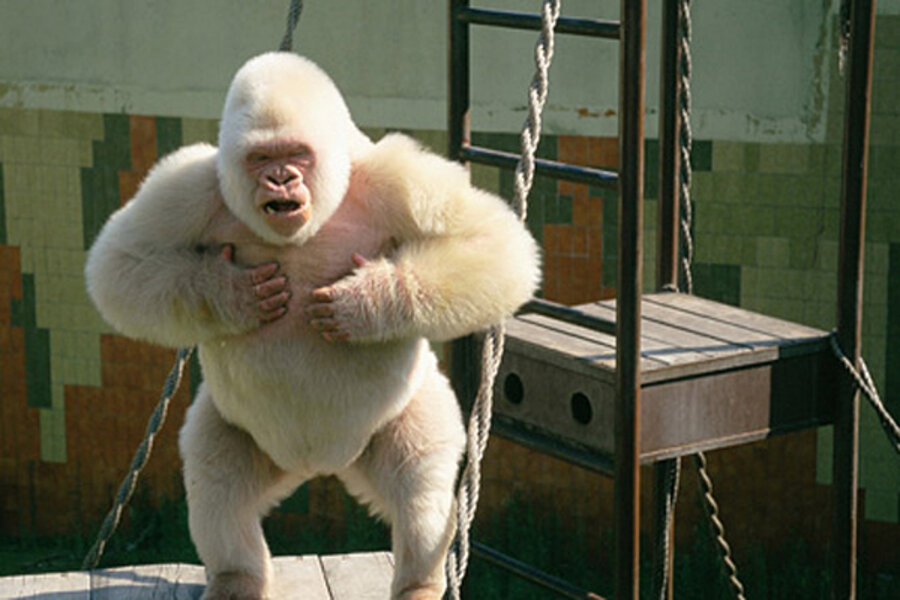Albino gorilla was inbred, say scientists
Loading...
The most popular resident of the Barcelona Zoo likely had a mother who was also his first cousin. His maternal grandparent would therefore have been his aunt or uncle, so his paternal grandparents would have also been his maternal great-grandparents. And his offspring were his first cousins twice removed.
It's true: Snowflake, an albino Western lowland gorilla that lived in the Barcelona Zoo for almost 40 years, is the product of inbreeding, according to an analysis of the deceased primate's genome.
Snowflake was born in the wild and captured by villagers in Equatorial Guinea in 1966 when he was only a year or two old. He lived at the Barcelona Zoo, where his milky complexion made him a main attraction, until his death in 2003 from skin cancer.
Using frozen blood samples, a team of 30 scientists led by Tomas Marques-Bonet of the Institut de Biologia Evolutiva at the University of Pompeu Fabra, sequenced Snowflake's genome.
In the study, published in the current issue of the journal BMC Genomics, the researchers describe how they traced his albinism to a single gene – called SLC45A2 – that mediates the synthesis of skin, hair, and eye pigmentation in many animals, including mice, horses, tigers, some species of fish, and humans.
"Finally, after so many years, it is a joy to explain why Snowflake was albino," said Dr. Marqués-Bonet, in a press release.
The researchers also found that Snowflake's parents shared 12.5 percent of their genes. After running computer simulations that took into account the influence of gender on the rates of genetic recombination, the researchers concluded that the gorilla was most likely the product of a pairing between an uncle and a niece, or possibly an aunt and a nephew.
Previous analyses of parentage of other members of Snowflake's species have not found inbreeding, suggesting that it is a rare behavior among Western lowland gorillas.
When relatives mate, it increases the probability that two copies of any given gene will be derived from the same ancestor, and therefore will be identical. Albinism, an absence of a pigmentation chemical called melanin, is a recessive trait, meaning that it takes two of the genes for that trait for it to be expressed.
Albinism is believed to affect all vertebrates. It affects about one in 17,000 humans, and is most prevalent among sub-Saharan populations.








